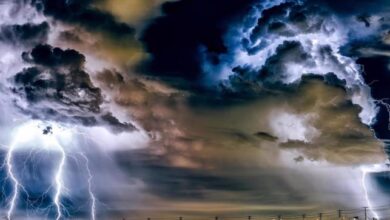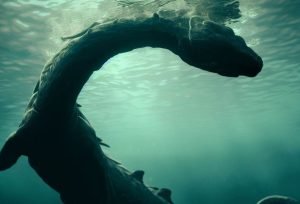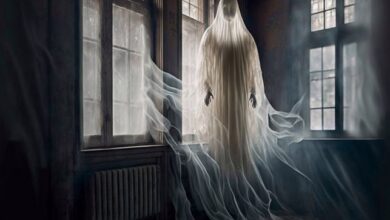Who Says the Loch Ness Monsters Weren’t Seen Before 1933? Totally Wrong!

The Loch Ness Monster: just about everyone has heard of it. A large number of people claim to have seen the long-necked, humped leviathan of the deep. Some have even photographed and filmed it. Nessie, as the beast is affectionately known, has been a staple part of the world of the unexplained since 1933, when the phenomenon of the monster exploded in spectacular, planet-wide fashion. Since then, millions of people have flocked to the shores of the 22.5 miles long and 744 feet deep loch, all in the hopes of seeing the elusive creature. Attempts have been made to seek out Nessie with sonar-equipment, aircraft, balloons, and even submarines. Theories abound as to what Nessie is – or, far more likely and correctly, what the Nessies are. Certainly, the most captivating theory, and the one that the Scottish Tourist Board, moviemakers, and the general public find most appealing, is that which suggests the monsters are surviving pockets of plesiosaurs. They were marine reptiles that the domain of zoology assures us became extinct tens of millions of years ago. The possibility that the monsters are actually giant-sized salamanders holds sway in more than a few quarters. As does the idea that perhaps massive eels are the culprits. Then there are scenarios involving sturgeon, oversized turtles, catfish, and even crocodiles, giant frogs, and hippopotami!
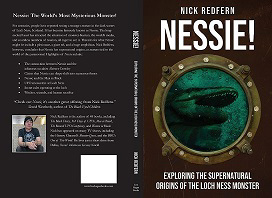
Numerous Nessie enthusiasts, investigators, and authors have spent years – decades, in some cases – pursuing their quarry. They have done so in a fashion that uncannily mirrors the obsessive actions of the fictional Captain Ahab, in Herman Melville’s acclaimed 1851 novel, Moby Dick; or the Whale. But, it’s all, and always, to no avail. No matter the number of days, hours, weeks and years spent, and no matter just how advanced the technology utilized to find the animals might be, it forever ends in failure. After more than eighty years of intensive investigation, the Nessies still evade capture, discovery or classification. Is this all down to sheer bad luck and inept investigations? Certainly not. Rather, it’s a case of people looking for the answers in the completely wrong direction. Over the decades numerous numbers of books have been written on Nessie. For the most part, they all follow the same path. It’s a path that is becoming more and more weary, predictable, repetitive, and worn, as the years go by. Those same books typically take a near-identical approach: they chronicle the most famous sightings, the chief players in the saga, and the theories that exist to explain the monster – and then they leave it at that. All of which brings me to the theme of the barticle you are now reading.
For me to simply regurgitate all the same old stories at length, and to uphold the same old theories for what the beasts of that massive loch might be, would be pointless. Such a thing has now been done to the point of utter tediousness. And doing so has achieved nothing meaningful, in any way whatsoever. It’s time for a fresh approach to solving the mystery. It’s an approach that takes us down terrifying, paranormal and occult pathways and leads us into a dark realm inhabited by Nessies that are far removed from the flesh and blood creatures that so many people believe, want, or assume, them to be.There is demonstrable evidence that the monsters of Loch Ness are of a definitively supernatural – rather than a flesh and blood – nature. Not only do I believe that the Nessies are supernatural, it’s a fact that key things in the history of the Loch Ness Monster are wildly off course. For example, Nessie “lore” suggests that the Nessies weren’t seen since in the loch 1933. Garbage! They have been around for centuries. Maybe longer. And that’s what I’m going to share with you today: the fact that the Nessies are ancient and not just creatures that popped out of the water in 1933.
In early October 1868, what was described as a large fish was washed up on the shores of Loch Ness, approximately two miles west of Lochend Inn. The discovery of the remains of the animal led huge crowds of people to descend on the loch, all eager and excited to see what had fallen into their hands, so to speak. The discovery proved to be overwhelmingly anti-climactic, however. The giant fish was actually nothing but a six-foot-long bottle-nosed whale. How it got there was a mystery – at least, it was a mystery until it was discovered that a crew of fishermen had caught the animal in the ocean. They had relieved it of its valuable blubber, and then dumped it on the shore of Loch Ness for all to see, and with the intent to cause amazement, surprise, and maybe even a not-insignificant amount of fear. But….as with an 1852 saga of misidentified ponies, the case of a dead bottle-nosed whale reveals a good deal of intriguing data. Once again the Inverness Courier was quick to report on the discovery. The unnamed reporter who covered the story said that the finding of the animal reminded local folk of a large fish of a similar appearance that had been encountered, on many occasions, and for many years, in Loch Ness.

So, despite the events of 1868 being the result of nothing stranger than a good natured hoax, they prompted talk of sightings of other large, unknown animals in the loch from years earlier; specifically a time-frame when talk of the much-feared kelpie was all-dominating. Also, that the fishermen specifically chose Loch Ness for the site of their prank suggests they, too, knew of the old stories of monsters inhabiting the loch. After all, they could have chosen just about any of the many and varied Scottish lochs for their joke. That they specifically chose Loch Ness is eye-opening and speaks volumes in relation to what they knew of the pre-existing supernatural lore of the loch. It was surely not down to mere chance. One more thing on this particular matter: when the body of the whale was found, and before it was identified, the media reported that the whole affair boded nothing but negativity, famine and disaster for the people of Loch Ness. Again, this implies a longstanding acceptance of the supernatural nature of the monsters, and even their abilities to curse the people of the area and to blight the landscape.
Moving on to 1880 there is the sensational saga of one E.H. Bright. On the day in question, along with a friend, and when he was just eight years old, Bright was strolling along the shore of Loch Ness in the vicinity of Drumnadrochit. It wasn’t long before something astounding happened. Bright had an encounter with a Nessie not in the water, but on the land. The beast, apparently, loomed out of the camouflage of an area of dense woodland, which was located at a distance of around 300 feet from Bright and his astonished pal. To say that the animal was a weird one is an understatement of epic proportions. It was described as being elephant-like in both size and color, had a long neck, and possessed a very small head that was somewhat akin to a snake’s head, in terms of its shape. And it moved in a very strange fashion: an awkward waddle that suggested it was not at all accustomed to, or built for, moving across the wild, hilly, wooded landscape of rugged Scotland. As it reached the water, the beast plunged into its depths with an almighty splash and was gone from view in seconds.
Bright and his friend, by now understandably scared out of their wits, raced to the home of Bright’s grandfather and, in stressed-out fashion, told the old man of what they had just seen. At first, he tried to play things down, possibly to try and calm the two boys, and made a joke about them having maybe indulged in a couple of shots of good old Scottish whiskey. Later on, however, and after a set of strange, large, three-toed tracks were found near the shore, Bright’s grandfather quietly admitted to him that tales of strange creatures in Loch Ness extended well into the history of the area, but that everyone knew it was wise to stay silent on the matter. Don’t forget, too, that the kelpie – although predominantly a beast of water – was known for leaving the deep waters and lurking in the shallows, the marshes, and even on land. In view of that, we might be wise to suggest that E.H. Bright and his friend were very lucky not to have been pulled down into the depths of Loch Ness by a murderous, land-roaming kelpie.
Around this very same time, another, similar event occurred. The origins of the story are somewhat convoluted, but certainly not unbelievable, given all that we have seen so far. The tale came from an Edward Smith, who got the story from an elderly lady who, with her two brothers, saw a Nessie when she and they were children, at some point around 1879 or 1880. It may not be irrelevant to note that when the three saw the monster they were sat on the slopes that overlook an old graveyard, one which stands at the site of Aldourie Castle. After all, what more appropriate a place for a murderous kelpie to lurk could there be than the domain of the dead? As they ate their lunch among the old graves, the trio heard strange and unearthly noises coming from behind them. Turning around quickly, they were terrified out of their wits by the sight of a full-blown monster in their midst. According to the woman, the beast was larger than an elephant, had a thin, long neck, and moved in a side-to-side fashion. For a brief period it peered at the three children, and then waddled off to the loch and vanished into its murky waters.
Eighteen-eighty was the year in which one of the most spectacular and nerve-jangling of all Nessie encounters took place. The unlucky eyewitness – and that really is the only way we can describe him – was a man named Duncan MacDonald. It was his task to take a dip into Loch Ness, at Johnnies Point, and examine a ship that had sunk in the entrance to the Caledonian Canal at Fort Augustus. MacDonald was confronted by something far stranger than a sunken ship. After being lowered to a depth of around thirty feet, he suddenly raced for the surface, practically screaming to his friends to haul him aboard their vessel. It was several days before MacDonald could bring himself to confide in the rest of the crew what he had seen. It was nothing less than a frog-like creature, perched on a rock shelf, and which was around the size of a fully-grown goat. The beady-eyed monster and the terrified diver even locked eyes on each other, until MacDonald, momentarily paralyzed with fear, managed to swim for safety and reached the surface. Thankfully, the monster-sized frog – or whatever it was – did not pursue him and there was no repeat of the deadly attack involving St. Columba, hundreds of years earlier.
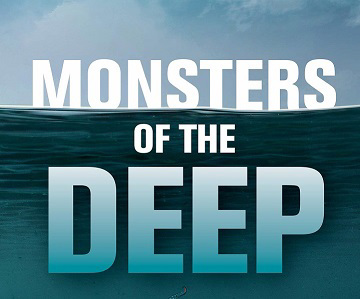
There is also the admittedly scant story told to Nessie investigator, and BBC newsreader, Nicholas Witchell. According to one Jock Forbes, a gypsy woman told of seeing a terrible beast lying in a stretch of bracken near a stretch of Loch Ness shore at some point in the 1890s. Since hoaxes tend to be elaborately weaved affairs, the very brief data in this case is actually supportive of its reality. Then, just seven years before the end of the 19th century, James Mackinlay revealed something very noteworthy in his book, Folklore of Scottish Lochs and Springs. He said: “A noted demon-steed once inhabited Loch Ness, and was a cause of terror to the inhabitants of the neighborhood. Like other kelpies, he was in the habit of browsing along the roadside, all bridled and saddled, as if waiting for someone to mount him. When any unwary traveler did so, the kelpy [sic] took to his heels, and presently plunged into deep water with his victim on his back.” The cases cited in this article are not, by a long stretch of the imagination, the totality of 19th century reports of weird animals seen in, and on the land immediately around, Loch Ness. In fact, the exact opposite holds true. They are, however, some of the more revealing and amazing cases on record and which demonstrate undeniable beliefs in kelpies and supernatural animals at the loch. When collectively placed under one banner, they make it abundantly clear that the Nessies were known to the village- and town-folk of the region, and long before the mania of the 20th century ever began.

